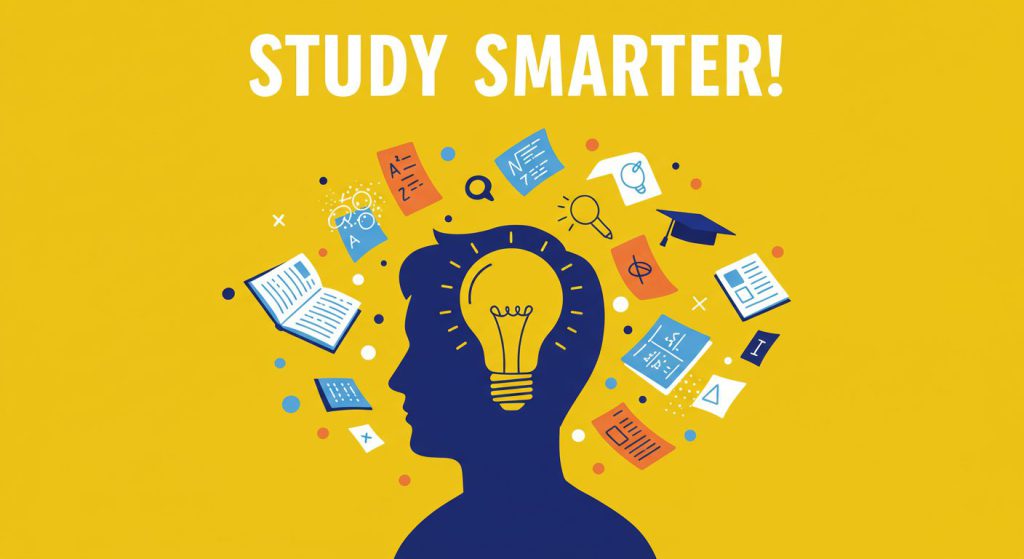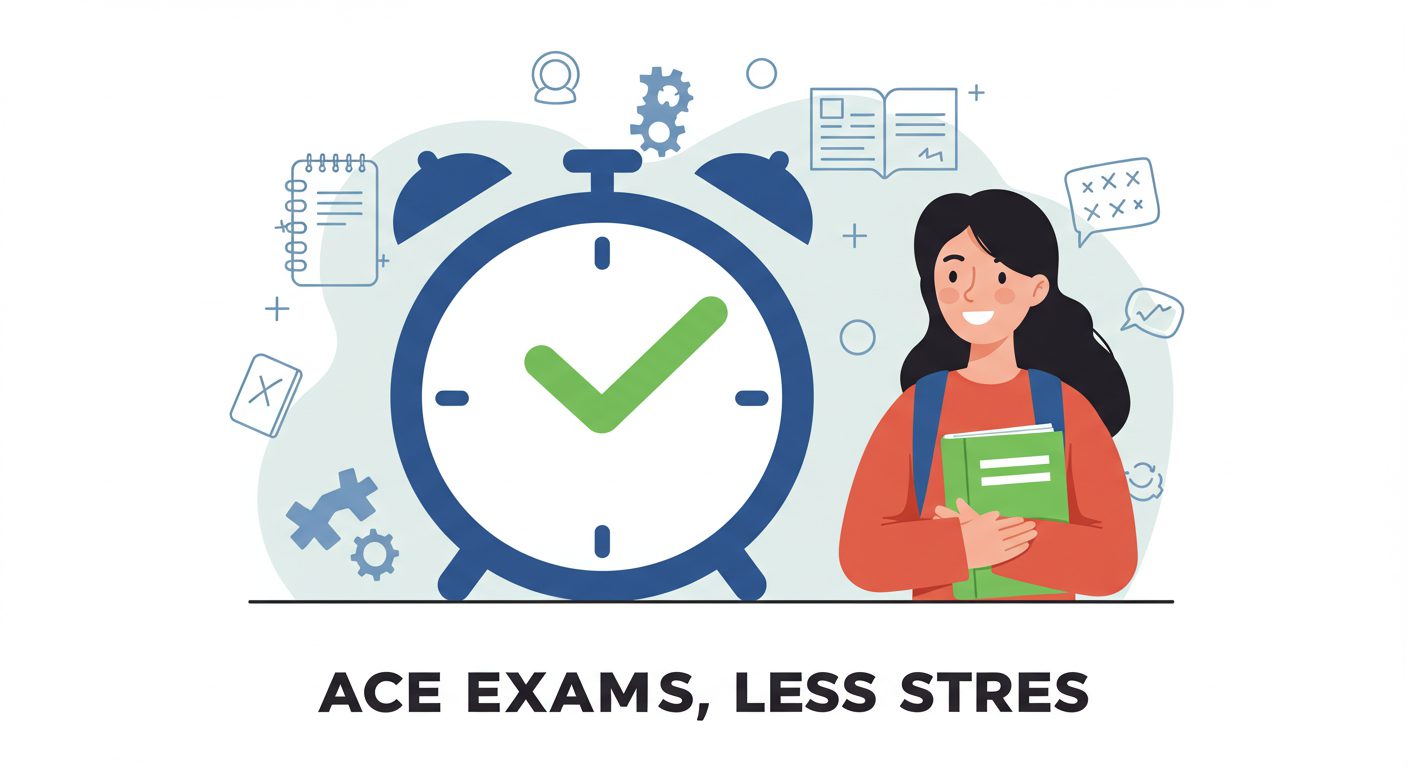Beyond the chaos, prioritize leisure. Abby set aside time for friends and hobbies to recharge, which enhanced her overall productivity. When you’re rejuvenated, you’re more capable of harnessing a peak attention state. So, make that coffee date or movie night and commit to it. Balanced living enhances one’s ability to study effectively, not the reverse.
Waking up at dawn and trying to juggle coffee and lecture notes until midnight can feel exhausting, and that below-average sluggish feeling becomes the cherry on top. Cambridge graduate Abby faced a baffling puzzle until she figured out how to study efficiently, not harder. A few tried and tested methods transformed Abby from an overwhelmed student to someone who mastered her academic journey, reaching an 80 on her Master’s thesis. Her revelation? Rather than struggling to work for over 12 hours, the answer lies in learning how to study less more effectively. In this article, we’ll outline Abby’s scientifically-aligned transformative study tips to boost focus, confidence, and grades. Want to change how you study? Here are five practical steps you can take right now.
1. Put Yourself on a Schedule in Order to Work More Efficiently
This sounds counterproductive in a way, does it not? Why may one suggest that studying less gives better results? Abby always thought of herself as a productivity wizard since she ‘studied’ for around 11.5 hours a day, but in reality, she was a zombie of sorts. Her burnout was so extreme that she wasn’t learning anything. In fact, Pencavel’s research on productivity revealed that exceeding 50 hours of logged work weekly (which is around 7.2 hours per day), leads to a significant reduction in concentration and energy levels. Abby, like many others, learned the hard way that the brain isn’t a machine — it needs room to breathe and time to process long before it can perform optimally. It became painfully clear to her that long hours simply disengaged her brain, leaving her going through the motions.
Try this: actively participate in ~7 structured study sessions per week, and strive to approach 25 hours of studying to really feel a difference. Explore the 4-hour mark — enabling a more enjoyable, optimal schedule for yourself — suggested by psychologist Anders Ericson. During your free time, remove the remnants of guilt for not studying — let your brain unwind and make sense of all the information gathered. Embrace: potent structure during focused intervals, followed by complete disengagement.
2. Getting Rid of the Obsession for Note Taking
Raise your hand if you’ve wasted an entire afternoon drafting elaborate notes that are color-coded, thinking you’re some study ninja, only for it to dawn upon you that you don’t actually understand the content? Abby was in such a situation, decorating her wall with A3 meticulously crafted notes that did not help her learn anything. Note-taking can be a snare: it can be passive activity which is often time consuming, meaning that you are writing but not learning.
Efforts should be made to understand first instead of focusing on creating an aesthetically pleasing document. Any note that is recorded has to be short, and focus on the main ideas alongside questions. Abby suggests freeing yourself from the compulsion of wanting to write everything down. Redirect that time into active learning, which we shall discuss in a moment, and rest assured that less note taking leads to better retention. Remember, your aim is not to fill a beautiful notebook, but to have a brain that accurately knows the material.
3. The Value of Active Learning for Better Cognitive Associations
Abby realized that passive learning, such as rewriting lecture slides, does not stick. But this is where the magic happens. Active learning builds strong neurological connections: marking will aid retrieval and application of knowledge during exams. Active learning, on the other hand, plants the seed rather than scattering it.
Abby suggests taking a bunch of sheets for math or technical subjects and getting started on diving into them. Write down equation, x over y, and thought processes and don’t worry about looking tidy. For subjects with heavy texts, don’t bother rewriting the notes. Instead, highlight important concepts that need to be covered and make flashcards with 6–10 questions per topic. Check these cards every one or two weeks, and discuss the concepts through and jot down ideas on a whiteboard. This so-called “chaotic” approach helps in training your brain so that it can recall information when it is most needed.

4. Rearrange Past Papers – Forget the Clock
Abby emphasizes the importance of structure with past papers, something that has become a go to.
Her use of past papers involved working on questions under very strict time frames. She would try to answer all the questions within 30 minutes which builds pressure. The outcome of this was a sense of defeat due to an inability to succeed in the first place. Too early attempts at timing oneself can lead to a feeling of mimicking exam pressure without proper skills being put in place to manage it.
Instead, think about past papers with curiosity instead of as a race against the clock. Take a question, give yourself boundless time, and do wonder whatever comes to mind. The answers should be kept far away to preventing from peeking. This changes the way the mind works towards creativity and problem-solving. Abby discovered that her problem-solving confidence increased during exam periods, because spending hours on single questions built her confidence and understanding. She had been prepared for exams with clear-headedness. With time, the student becomes speedier and much more confident.
5. Create Fun Chaos While Studying
Studying has systems which can be too perfect that create rigidity. The most innovative exercise Abby learnt was that studying should be chaotic especially for advanced levels like engineering or math. Studying must be done without restriction to allow the brain to work through ideas, experiment, and combine different elements. The learner must abandon all expectations of studying that look impressive. Race against the stereotypical well-organized notes. Get up and get physical, spacewalk your room over and over for freedom, and draw concepts on a whiteboard.
Beyond the chaos, prioritize leisure. Abby set aside time for friends and hobbies to recharge, which enhanced her overall productivity. When you’re rejuvenated, you’re more capable of harnessing a peak attention state. So, make that coffee date or movie night and commit to it. Balanced living enhances one’s ability to study effectively, not the reverse.
Case Study: Sam’s Turnaround
Meet Sam, a second-year biology student who was drowning in lecture slides and endless notes. He studied 10 hours a day, but his grades hovered at a C average. Frustrated, he stumbled across Abby’s approach and decided to try it. First, he cut his study time to 6 hours a day, scheduling gym sessions and game nights with friends. He stopped rewriting every lecture and started active learning: for biology, he made flashcards with questions about key processes and reviewed them weekly, talking through answers aloud. For past papers, he ditched the timer, spending hours exploring one question until he understood it inside out.
Over three months, Sam noticed a shift. He felt less stressed, more confident, and—most importantly—he understood the material. By exam season, he was tackling questions with ease, earning his first A. Sam’s story shows that studying smarter, not longer, can transform your academic journey.
Key Takeaways
- Work less, focus more: Cap study time at 7 hours daily to boost energy and deep focus.
- Skip excessive notes: Prioritize understanding over pretty pages to save time and brainpower.
- Learn actively: Use chaotic, hands-on methods like deriving equations or flashcards to build lasting knowledge.
- Rethink past papers: Ditch timers early on to train deep thinking and confidence.
- Embrace chaos and fun: Let studying be messy and balance it with enjoyable breaks for better results.
Conclusion
Abby’s story reminds us that studying isn’t a one-size-fits-all game. You don’t need to mimic the 17-hour workdays of CEOs or fill notebooks with perfect handwriting. What matters is finding a rhythm that works for you—one that blends focused, active learning with rest and joy. Experiment with these tips: cut your study hours, get chaotic with your learning, and make space for fun. You might be surprised at how much more you achieve when you stress less. So, grab a piece of paper, scribble some ideas, and start studying smarter today. Your brain—and your grades—will thank you.
